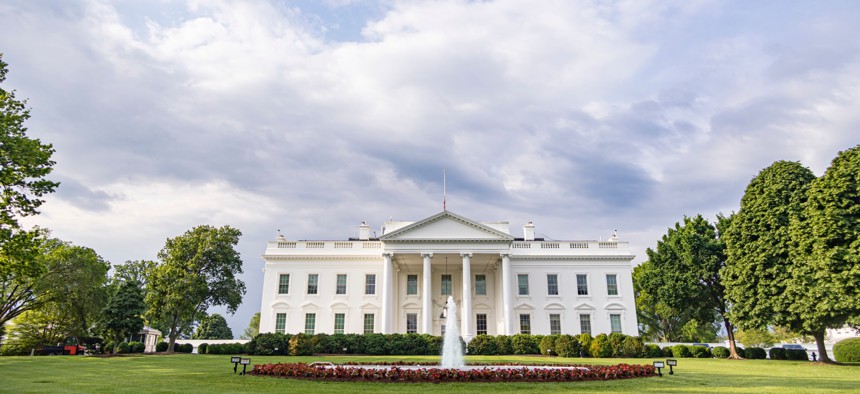
Strengthening the federal workforce and improving customer service have been President's Management Agenda touchstones across four administrations. NurPhoto / Getty Images
How successful are President’s Management Agendas?
The White House touted the recent gains it made in workforce and customer experience goals in the latest update to the governmentwide management plan, but the tangible effects of PMAs often tend to be more gradual.
According to the Biden administration’s quarterly update of its progress in fulfilling the President’s Management Agenda, released last month, the White House is keeping pace with its stated goals of strengthening the federal workforce and modernizing customer experience.
The latest Performance.gov post touts 5,800 new hires targeted for roles created by the Bipartisan Infrastructure Law and promises eight new pooled hiring efforts to support multi-agency hiring in fiscal 2024, amid other milestones situated across multiple strategy goals.
Likewise, the goal of making it easier for the public to interact with the federal government’s life experience services is progressing with the stand-up of several pilot programs, and its High Impact Service Providers are aligning operations and workforce capacity to eventually begin reporting customer feedback data.
But while the plan includes a litany of project milestones for federal agencies to hit in the coming year — the final year of this presidential term — gauging the ultimate success of an administration’s signature stamp on the management of the federal government is not always easy to discern.
“It centralizes the concept of good management as part of what the federal government is supposed to do,” said Terry Gerton, president and CEO of the of the National Academy of Public Administration. “Those goals change from administration to administration, but some of them, or at least the themes around them have stayed consistent. So what that means is that we can start to see trends over time, we can start to see more and more institutionalization of the process of management of those goals.”
The process of issuing a President’s Management Agenda was formalized during the George W. Bush administration in 2001, with a focus on stronger human capital management practices, competitive sourcing, the push towards developing e-government services and increasing federal performance, among other initiatives.
In the three administration’s that have followed, each as added its own priorities to the PMA, but have also taken the baton to carry forward initiatives from their predecessors.
The Obama PMA expanded cross-agency goals to include efforts to bolster cybersecurity, category management and shared services, alongside efforts to improve veteran health and address climate change. The PMA also called for information technology improvements and modernizing federal permitting and review processes for major infrastructure projects.
Trump’s PMA kept Obama goals like IT modernization, infrastructure permitting modernization, data utilization and others and mixed them with reskilling efforts within the federal workforce and focusing on technology adoption to optimize agency operations.
Each of the four PMAs has consistently sought to address new ways for the federal government to improve customer service and better engaging the federal workforce.
“The interesting thing about PMAs generally is that the whole point of them is to take some of these big swing challenges,” said Jenny Mattingley, vice president of government affairs for the Partnership for Public Service. “I think a lot of times people are thinking of a problem in the lens of one agency, but if you are looking at the federal workforce, customer experience, things that are in there now, those cross multiple agencies. So that’s where I’ve always thought the PMA sort of helps you put a framework per leadership attention, put accountability on trying to tackle a bigger issue.”
And perhaps because those goals touch multiple agencies, the progress towards them is often incremental, where forming leadership groups and developing policy guidance represent major lifts that can go unseen.
“Those goals are big so they allow a lot of work underneath them,” said Mattingley. “If you are talking about strengthening the federal workforce, that could go a lot of directions. So there is some flexibility to figure what’s the issue of the moment, how that might be tackled across a number of agencies and then to drill down in, but it allows some flexibility to change and change focus a little bit underneath those big umbrellas.”
According to the quarterly results, the Biden administration will continue to push into fiscal 2024 with operations milestones for its federal workforce, customer experience and streamlining acquisition goals.







